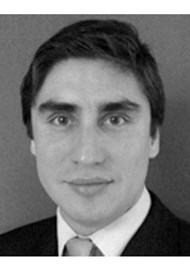Periorbital rejuvenation and blepharoplasty, in particular, are very common procedures nowadays in aesthetic practice. More than 153,000 blepharoplasty procedures were peformed in the USA during 2012. Blepharoplasty can sometimes be a very challenging surgery, especially if the patient presents with associated malar oedema, malar bags or festoons. In this article the authors propose an algorithm for the treatment for these previous conditions; they also describe a complete analysis of the relevant anatomy, pathophysiology, clinical examination, different surgical options and most common complications related to these procedures. First of all they describe the correct terminolgy for these conditions. Malar oedema is fluid collected in a variable quantity and located over the malar eminence and below the level of the infraorbital rim. Malar mounds refer to chronic swelling between the orbital rim and midcheek. Festoons are cascading hammocks of lax skin and orbicularis muscle that hang between the medial and lateral canthi and may or may not contain herniated fat. Regarding the anatomy, they clearly describe the importance of all structures involved; skin, muscle, ligaments, fat compartments and suporting structures, as well as the pathophysiology and factors that finally lead to the development of a festoon. Attention must be paid during the interview and physical examination to rule out many medical conditions which present with periocular oedema and are not meant to be resolved with surgery. Depending on the severity of each case, a surgical algorithm is proposed; the options presented are microsuction, skin-muscle flap, midface lift, direct excision, canthoplasty and cathopexy to prevent eyelid retraction. Complications can occur and they are well exposed in this article, they range from skin perforation, haematoma, contour defects, ectropion, eyelid malposition, periorbital oedema to zygomatic branch nerve injury. This is a very interesting article in the field of periocular rejuvenation. It clearly describes how Furnas and other colleagues have studied the role of the orbiculari oculi muscle into festoons’ development. The experience of the senior author with this pathology has led to a surgical algorithm to address this condition in a clear fashion.
Malar mounds and festoons
Reviewed by Felipe Culaciati
Malar mounds and festoons: review of current management.
CONTRIBUTOR
Felipe Culaciati
Instituto de ORL & Cirugia Plastica Facial, Barcelona, Spain.
View Full Profile



